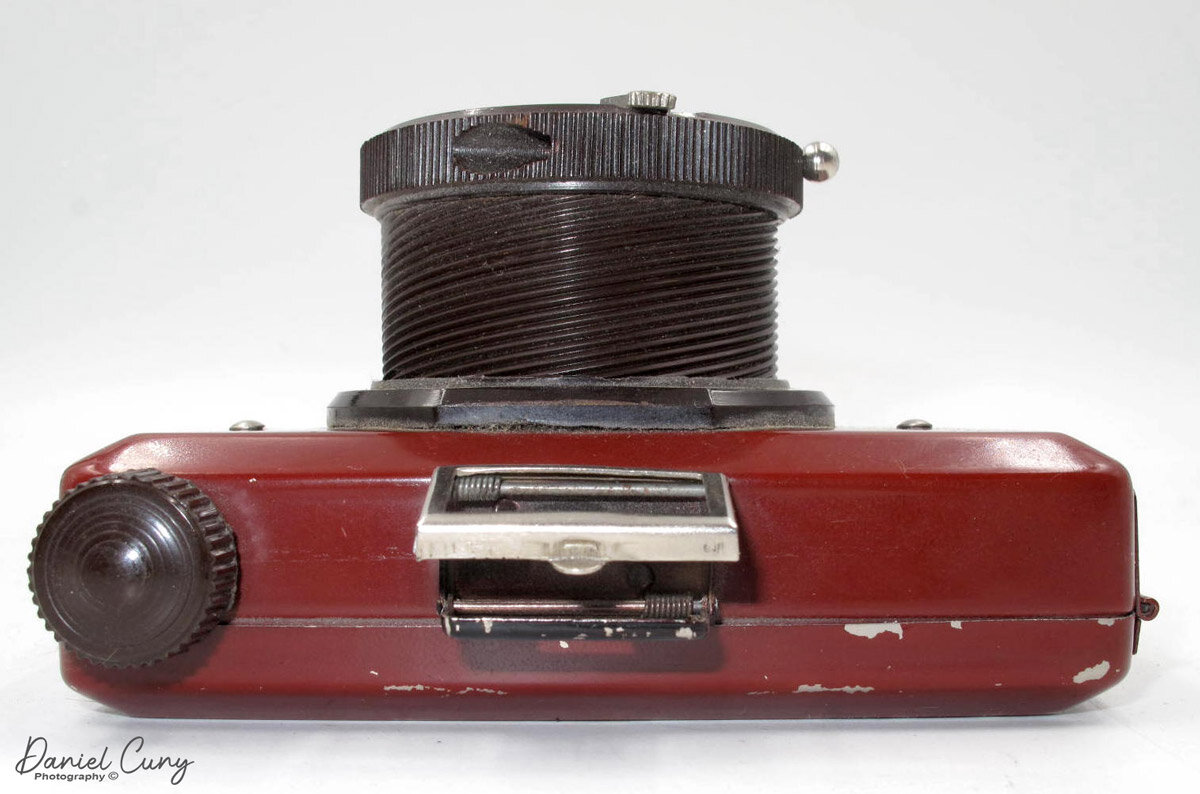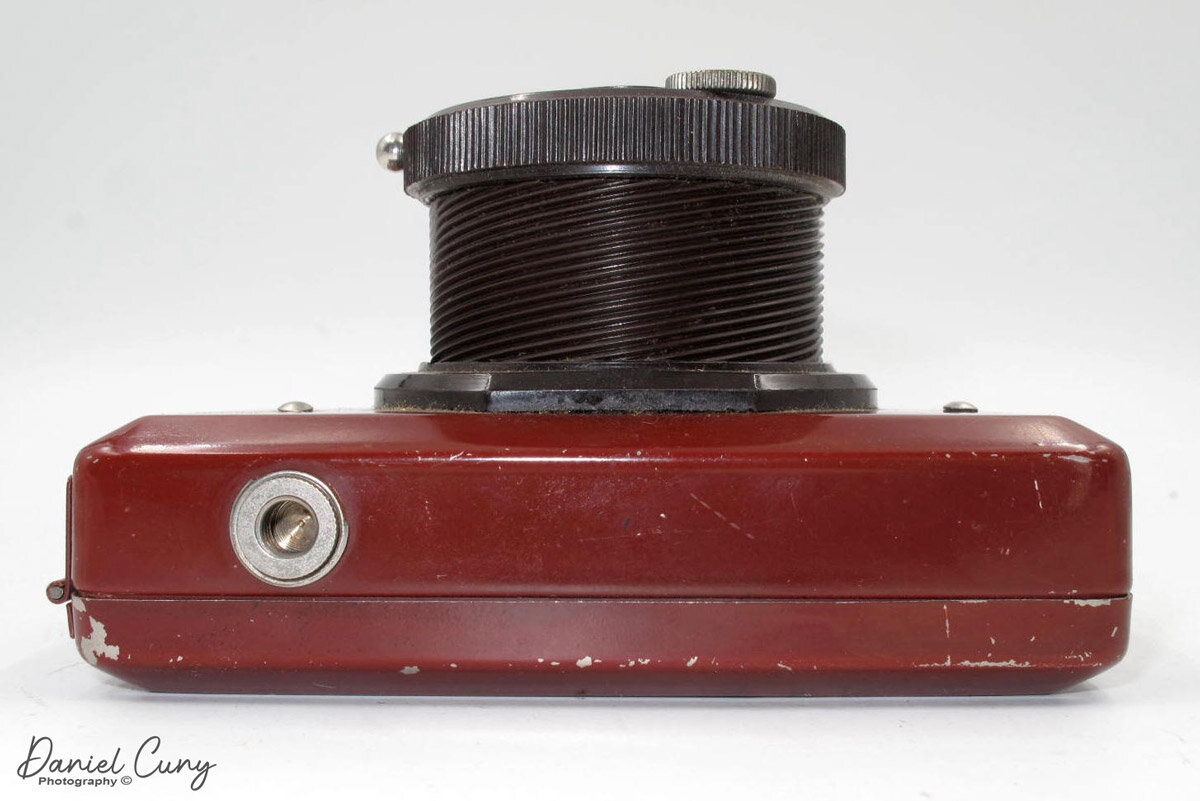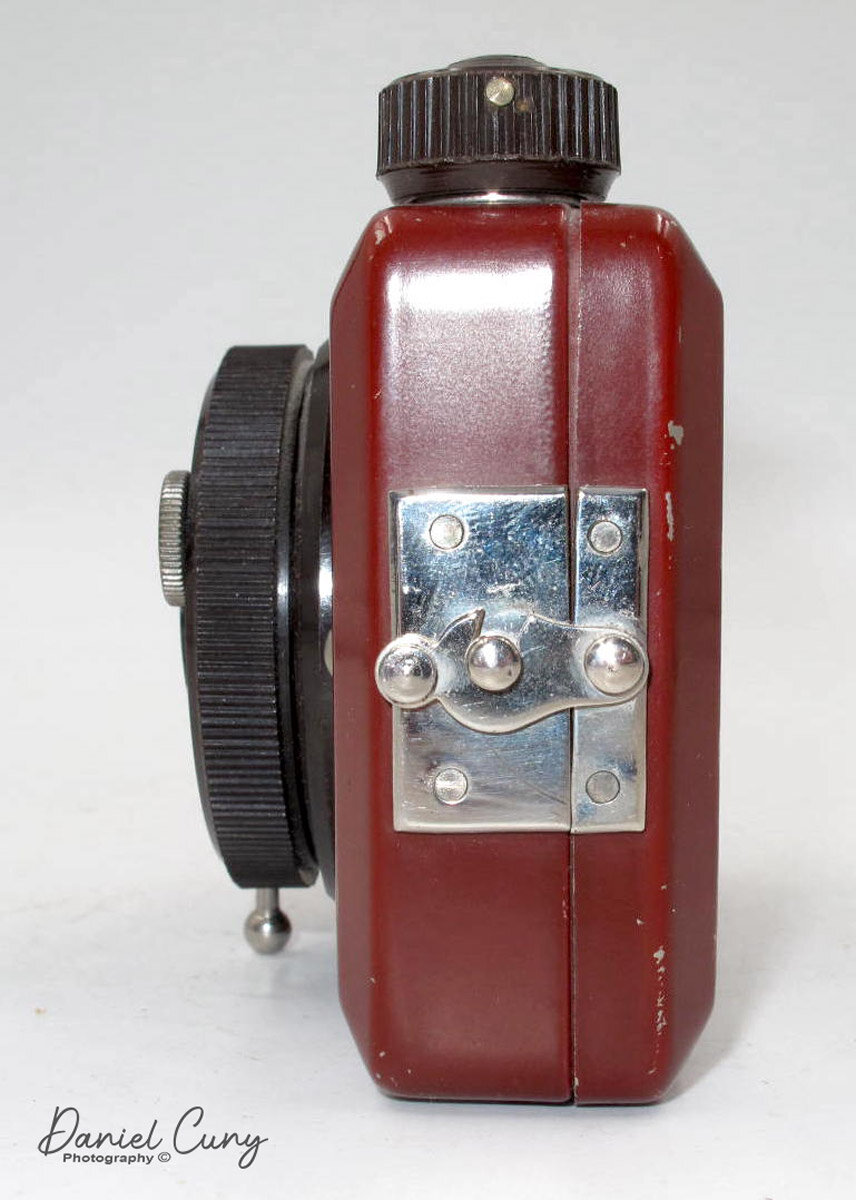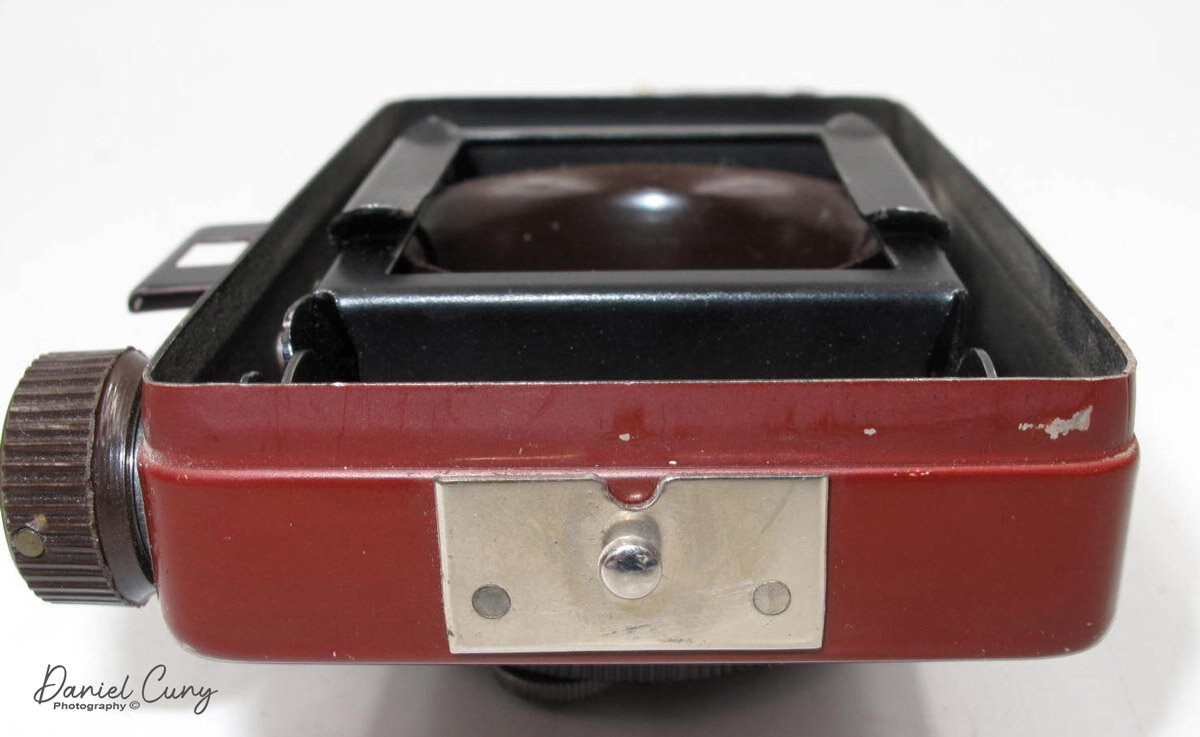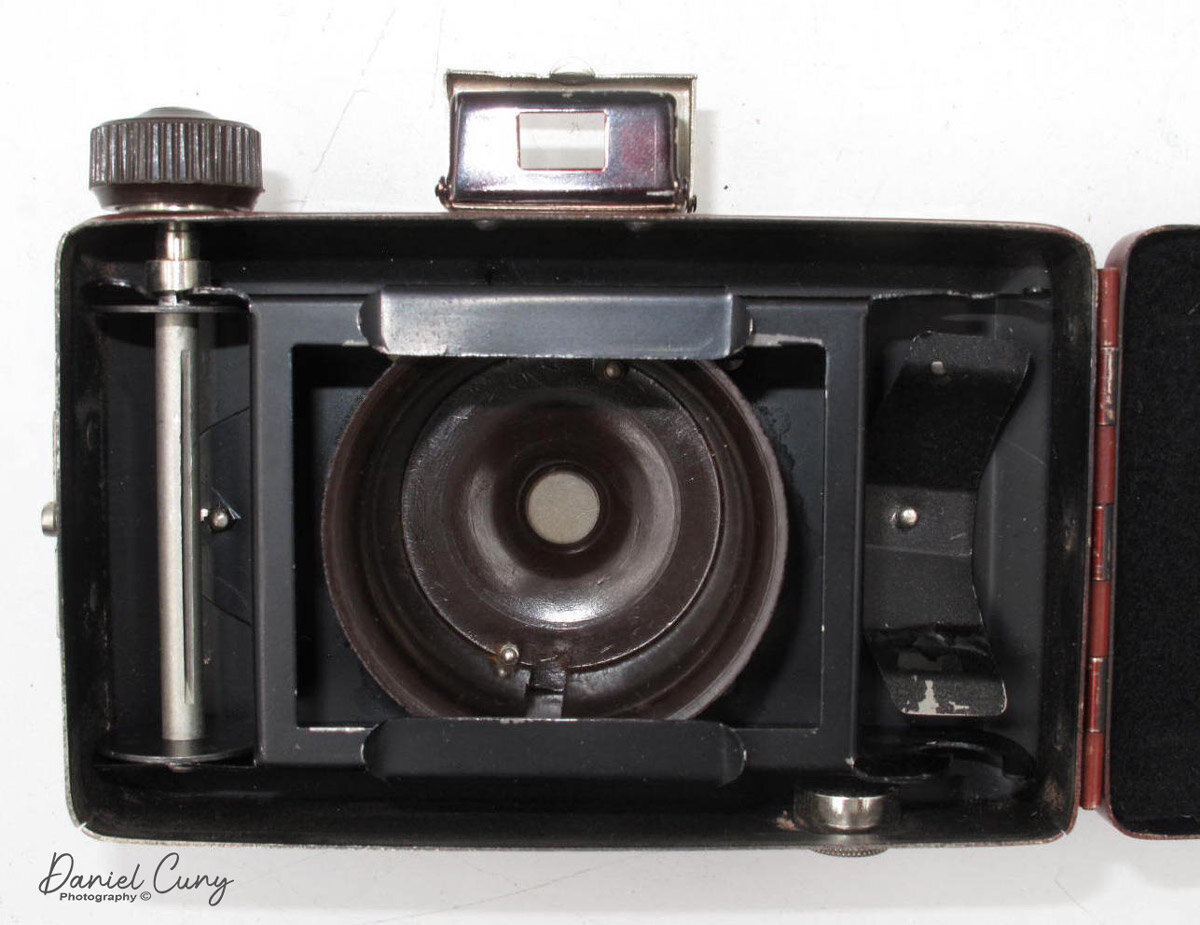As I've stated several times in my blog posts, that the flashy, colorful odd, unusual, or bazar cameras are items I'm attracted to. That's been the same my entire life. I believe that's probably true for the majority of individuals. People are always looking for something out of the ordinary, not the usual mundane, usual products or items. Maybe I'm wrong, but that's how my brain operates. With that in mind, this week's camera and maker of the camera fits right into this category, the Ruberg Art Deco camera.
My Ruberg “Art Deco” Camera
The company.
The Ruberg cameras were manufactured by the Ruberg & Renner company, which was located in the Delstern district of Hagen, Germany, during the 1930s. The company was started in 1918 by Josef Ruberg, who originally started producing drive trains for bicycles, motorcycles, and automobiles. After 1930, the company started making simple cameras. In 1931, Josef obtained a patent for the construction of a simple camera in Germany. He also received a patent in the United States in February 1932.
"Due to the simple and very inexpensive production of all the parts of the camera from synthetic resin which was done from a single pressing process makes it possible to place a cheap camera on the market which is affordable to all", it says on the patent application. In the 1930s, Ruberg & Renner manufactured four models with 25 designs for export to the USA, Great Britain, and France. The cameras' construction ended in the mid-1930s where the company started producing products to help the German war effort.
The Camera
As noted before, the Ruberg cameras are straightforward cameras with several different variations of the same build. The Art Deco version I have has the standard helical telescoping lens tube found on all of their cameras. On the back of my Art Deco camera are chrome patterns on two corners, giving it a modern look. The cameras take 127 size film and have a straightforward shutter system. Some later models even enjoyed the lens's focus, even though it was a fundamental zone focus. My Art Deco version is a metal body camera with a dark brown resin lens tube. My camera has either B for time exposures or I instantly, which is 1/25th second exposures. There is primary aperture control. Pulling on the chrome arm with the ball on end seems to change the aperture settings inside the camera's lens. Looking at the aperture settings, I can't see much difference. I'm guessing they are in the F8 to f11 or f16 settings.
The camera sports a straightforward pop-up sports finder. Mine is pretty wonky and doesn't stay erect and kind of flops down a bit. The film advance is just a bare knob to advance the film. Loading the film is basic. There is a latch on the side of the camera to open the back. The film slides through a channel to hold it flat. There is no pressure plate to keep it flat. There is a black piece of felt glued onto the backdoor on my camera, so I'm not sure if that's normal or just the previous owner did it to the camera I have. The red window cut out for the felt is professionally done, so it may be something they did in the factory.
The Ruberg Art Deco Camera with lens extended
Conclusion.
I enjoy this camera and am now looking for other Ruberg & Renner versions to add to the collection. I like the twisting lens, but most of all, I like the different colors the cameras come in. The shutter in my camera isn't working so I haven't taken photos with it. At some point, I'll be purchasing some 127 size film to run through the many cameras I have that take that film size.
Thank you for taking a few minutes out of your day to read this blog post. As always, I enjoy your replies and comments, so please keep them coming. Until next week, please be safe.

